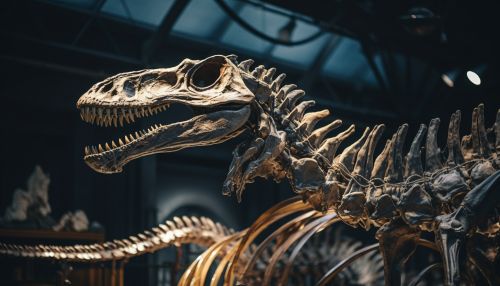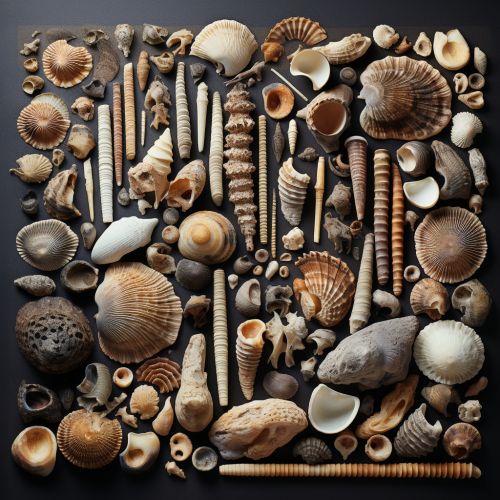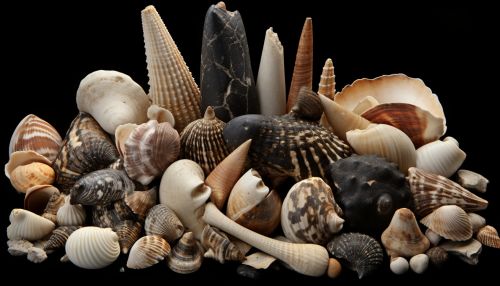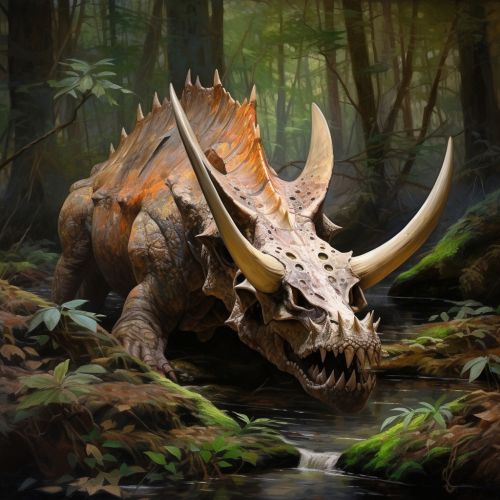Fossil Record
Introduction
The fossil record is a term used to describe the total number of fossils that have been discovered, as well as the information derived from them. The fossil record is one of the most important sources of information about the history of life on Earth, providing evidence about the types of organisms that have existed, their distribution in time and space, and their relationships to one another. The study of the fossil record, known as paleontology, has provided important insights into the history of life, the process of evolution, and the past climates of the Earth[1].


Formation of Fossils
Fossils are formed when organisms die and are buried by sediment. The process of fossilization involves several steps, including decay, permineralization, and lithification. Decay is the breakdown of organic material after death. In most cases, soft tissues decay rapidly and are rarely preserved, but hard tissues such as bones, teeth, and shells can remain intact for millions of years[2].
Permineralization occurs when groundwater permeates the hard tissues, depositing minerals that gradually replace the organic material. This process can preserve fine details of the original organism, including cell structures and microscopic features. Lithification is the process by which sediment is compacted and hardened into rock, encasing the fossil within it[3].


Types of Fossils
There are several types of fossils, each providing different types of information about the past. Body fossils are the remains of the physical body of an organism, such as bones, teeth, and shells. These fossils can provide information about the size, shape, and structure of ancient organisms. Trace fossils, also known as ichnofossils, are the remains of the activities of organisms, such as footprints, burrows, and coprolites (fossilized feces). These fossils can provide insights into the behavior and ecology of ancient organisms[4].
Microfossils are the tiny remains of microscopic organisms, such as foraminifera and radiolarians. These fossils are important for understanding the history of life in the oceans, as well as for reconstructing past climates. Chemical fossils, or biomarkers, are the molecular remains of ancient organisms, preserved in rocks or petroleum. These fossils can provide information about the types of organisms that existed in the past, as well as their environments[5].


The Fossil Record and Evolution
The fossil record provides important evidence for the theory of evolution. By studying the fossil record, scientists can observe changes in species over time, providing direct evidence for the process of evolution. The fossil record also allows scientists to trace the evolutionary history of organisms, revealing the sequence of events that led to the diversity of life we see today[6].
The fossil record also provides evidence for the occurrence of mass extinctions, periods of time when a large number of species disappeared from the Earth. The most famous of these is the Cretaceous-Tertiary (K-T) extinction, which occurred 65 million years ago and led to the extinction of the dinosaurs. The causes of mass extinctions are still a topic of active research, with theories including asteroid impacts, volcanic activity, and rapid climate change[7].


Limitations of the Fossil Record
Despite its importance, the fossil record is not complete. This is due to several factors, including the rarity of fossilization, the uneven distribution of fossils, and the incompleteness of geological record. The fossil record is biased towards organisms with hard parts, as these are more likely to be preserved than soft tissues. Similarly, organisms that lived in environments conducive to fossilization, such as shallow seas, are more likely to be represented in the fossil record than those that lived in other environments[8].
The fossil record is also biased by the uneven distribution of fossils. Some areas of the world have been more thoroughly explored than others, leading to a greater number of fossils being discovered in these areas. Similarly, some periods of time are better represented in the fossil record than others, due to variations in the rate of sedimentation and the preservation potential of different types of rock[9].


Conclusion
The fossil record is a vital source of information about the history of life on Earth. Despite its limitations, the fossil record provides invaluable evidence about the types of organisms that have existed, their distribution in time and space, and their relationships to one another. The study of the fossil record continues to provide important insights into the history of life, the process of evolution, and the past climates of the Earth.
See Also
References
- ↑ Prothero, D. R. (2007). Evolution: What the Fossils Say and Why It Matters. Columbia University Press. ISBN 978-0-231-13962-5.
- ↑ Briggs, D. E. G.; Crowther, P. R., eds. (2001). Palaeobiology II. Wiley-Blackwell. ISBN 978-0-632-05147-0.
- ↑ Prothero, D. R. (2004). Bringing Fossils to Life: An Introduction to Paleobiology. McGraw-Hill. ISBN 978-0-07-366170-4.
- ↑ Lockley, M.; Meyer, C. (2000). Dinosaur Tracks and Other Fossil Footprints of Europe. Columbia University Press. ISBN 978-0-231-11584-4.
- ↑ Briggs, D. E. G.; Summons, R. E. (2014). "Ancient biomolecules: their origins, fossilization, and role in revealing the history of life". BioEssays. 36 (5): 482–490. doi:10.1002/bies.201300130.
- ↑ Prothero, D. R. (2007). Evolution: What the Fossils Say and Why It Matters. Columbia University Press. ISBN 978-0-231-13962-5.
- ↑ Alvarez, L. W.; Alvarez, W.; Asaro, F.; Michel, H. V. (1980). "Extraterrestrial cause for the Cretaceous-Tertiary extinction". Science. 208 (4448): 1095–1108. doi:10.1126/science.208.4448.1095.
- ↑ Benton, M. J. (2004). Vertebrate Palaeontology. Wiley-Blackwell. ISBN 978-0-632-05637-8.
- ↑ Prothero, D. R. (2004). Bringing Fossils to Life: An Introduction to Paleobiology. McGraw-Hill. ISBN 978-0-07-366170-4.
